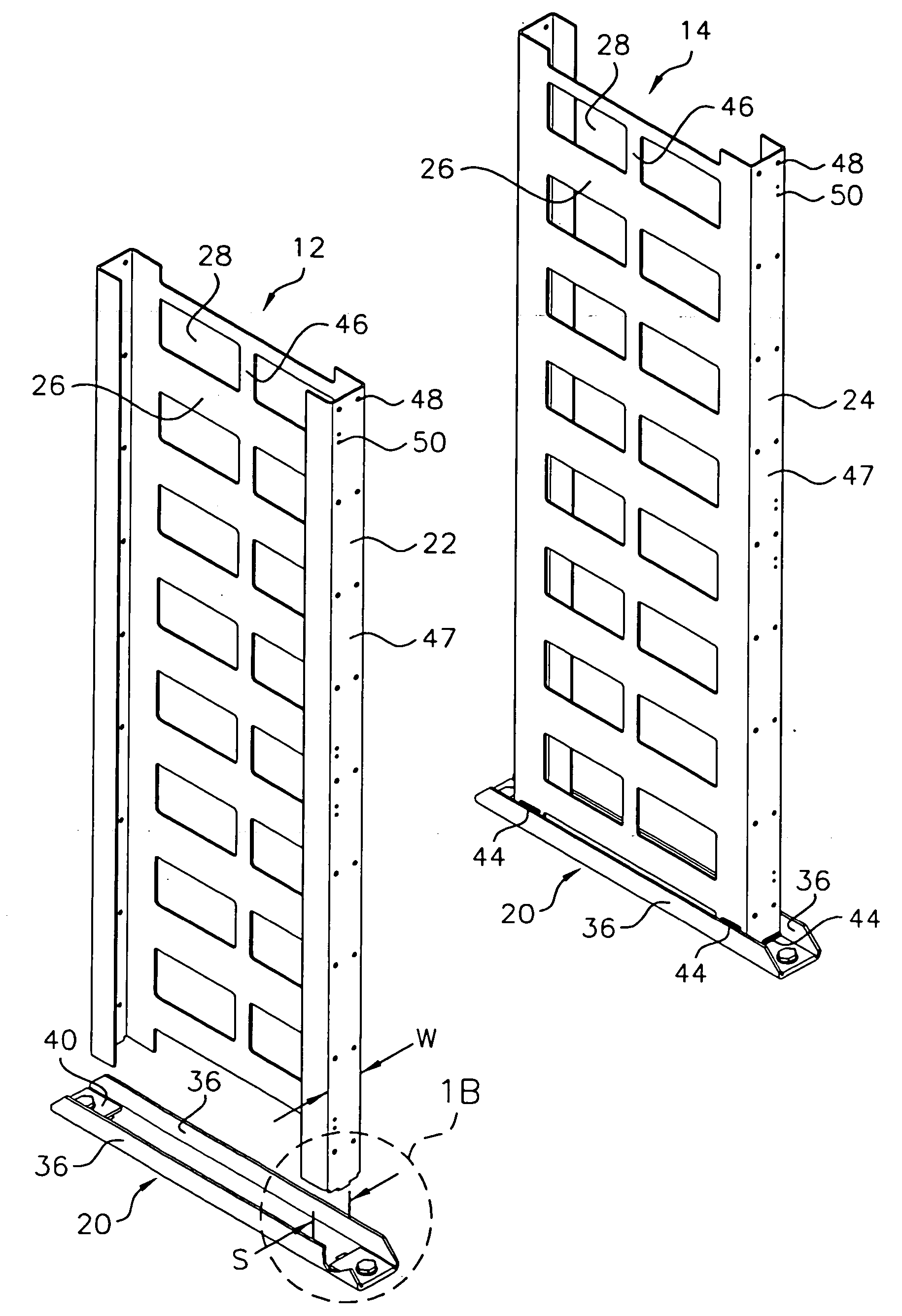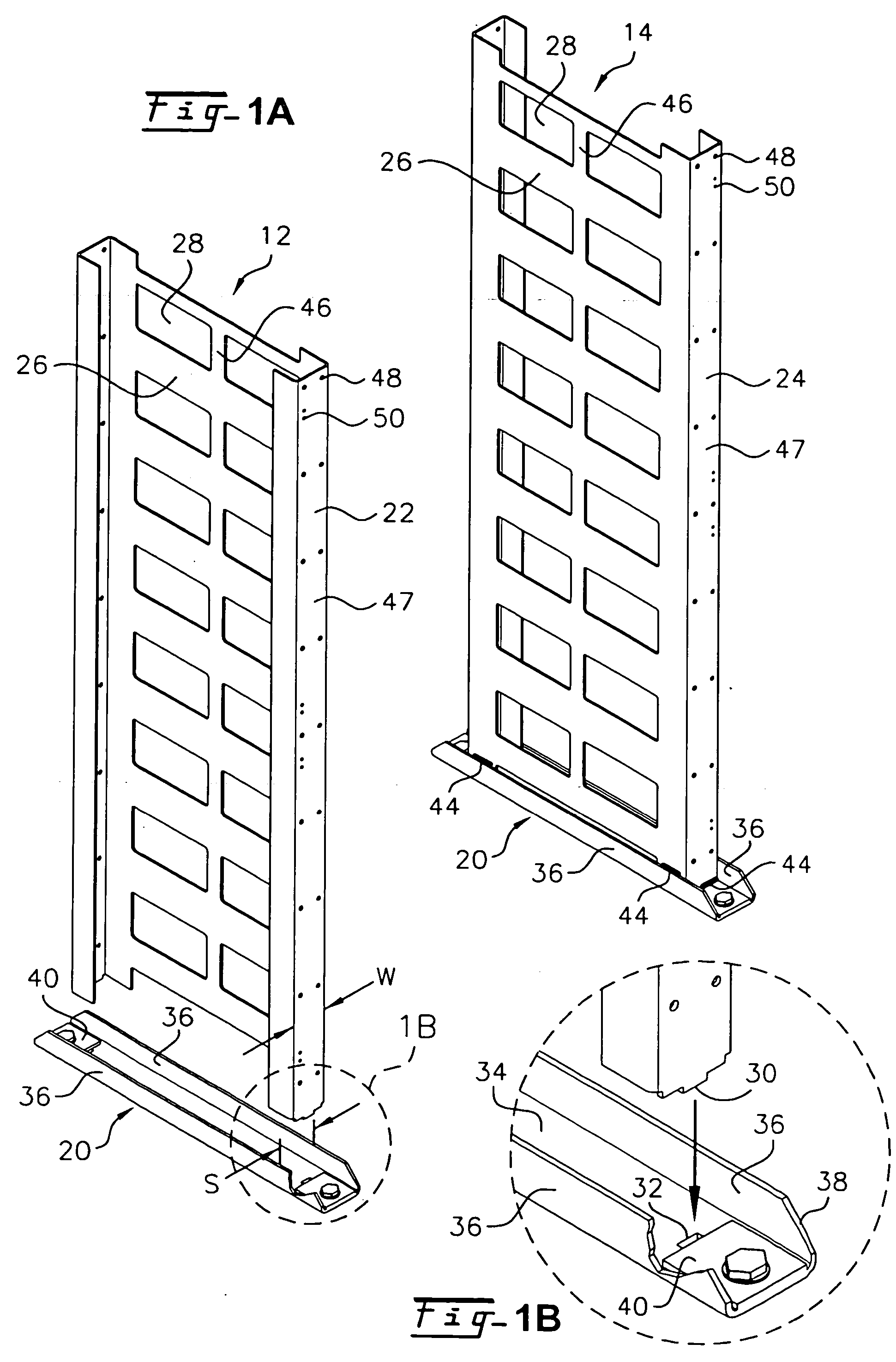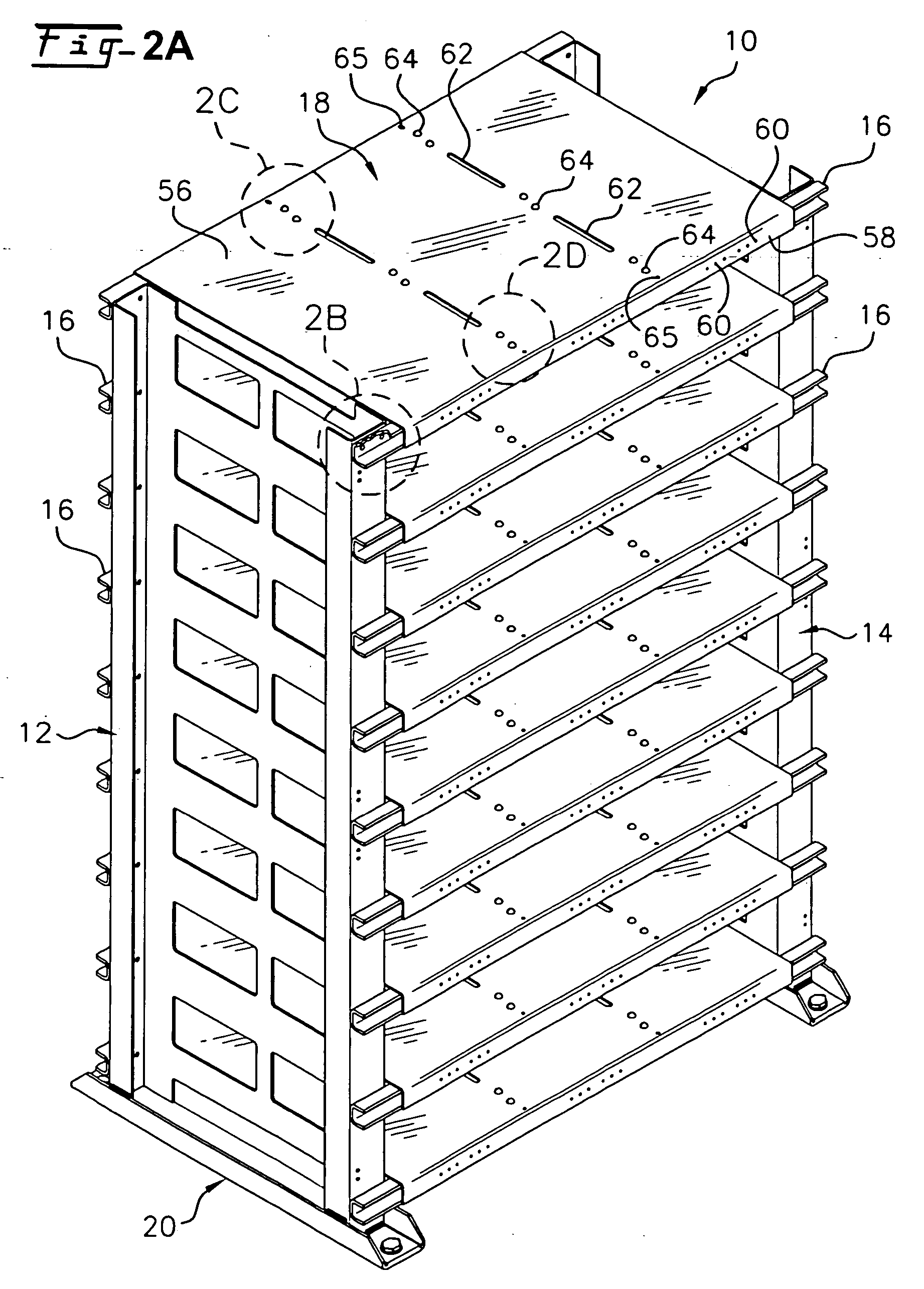Battery rack and system
a battery rack and rack system technology, applied in the field of racks, can solve the problems of reducing the capacity reducing the service life of the battery rack, so as to facilitate the vertical air flow, reduce the cost of installation, and facilitate the effect of vertical air flow
- Summary
- Abstract
- Description
- Claims
- Application Information
AI Technical Summary
Benefits of technology
Problems solved by technology
Method used
Image
Examples
Embodiment Construction
[0042] Referring now to the drawings and particularly to FIG. 2 thereof, there is shown a battery rack assembly and system including the unique features of the present invention which is generally designated by the numeral 10. The battery rack assembly 10 essentially comprises a pair of spaced apart end frames 12 and 14, a series of shelf support channels 16 which connect the end frames 12 and 14 and shelves 18 spanning the support channels which are spaced apart vertically to define a series of compartments for storing batteries in jackets in a manner described in more detail hereafter. The end frames 12 and 14 are rigidly supported in base channels 20) which can be anchored to a support surface such as a concrete floor in a commercial building.
[0043] Considering now the components of the battery rack assembly 10 in more detail and with specific reference to the end frames 12 and 14, each end frame may be fabricated from a single sheet of sheet metal punched and formed to the conf...
PUM
| Property | Measurement | Unit |
|---|---|---|
| seismic stress | aaaaa | aaaaa |
| width | aaaaa | aaaaa |
| distance | aaaaa | aaaaa |
Abstract
Description
Claims
Application Information
 Login to View More
Login to View More - R&D
- Intellectual Property
- Life Sciences
- Materials
- Tech Scout
- Unparalleled Data Quality
- Higher Quality Content
- 60% Fewer Hallucinations
Browse by: Latest US Patents, China's latest patents, Technical Efficacy Thesaurus, Application Domain, Technology Topic, Popular Technical Reports.
© 2025 PatSnap. All rights reserved.Legal|Privacy policy|Modern Slavery Act Transparency Statement|Sitemap|About US| Contact US: help@patsnap.com



